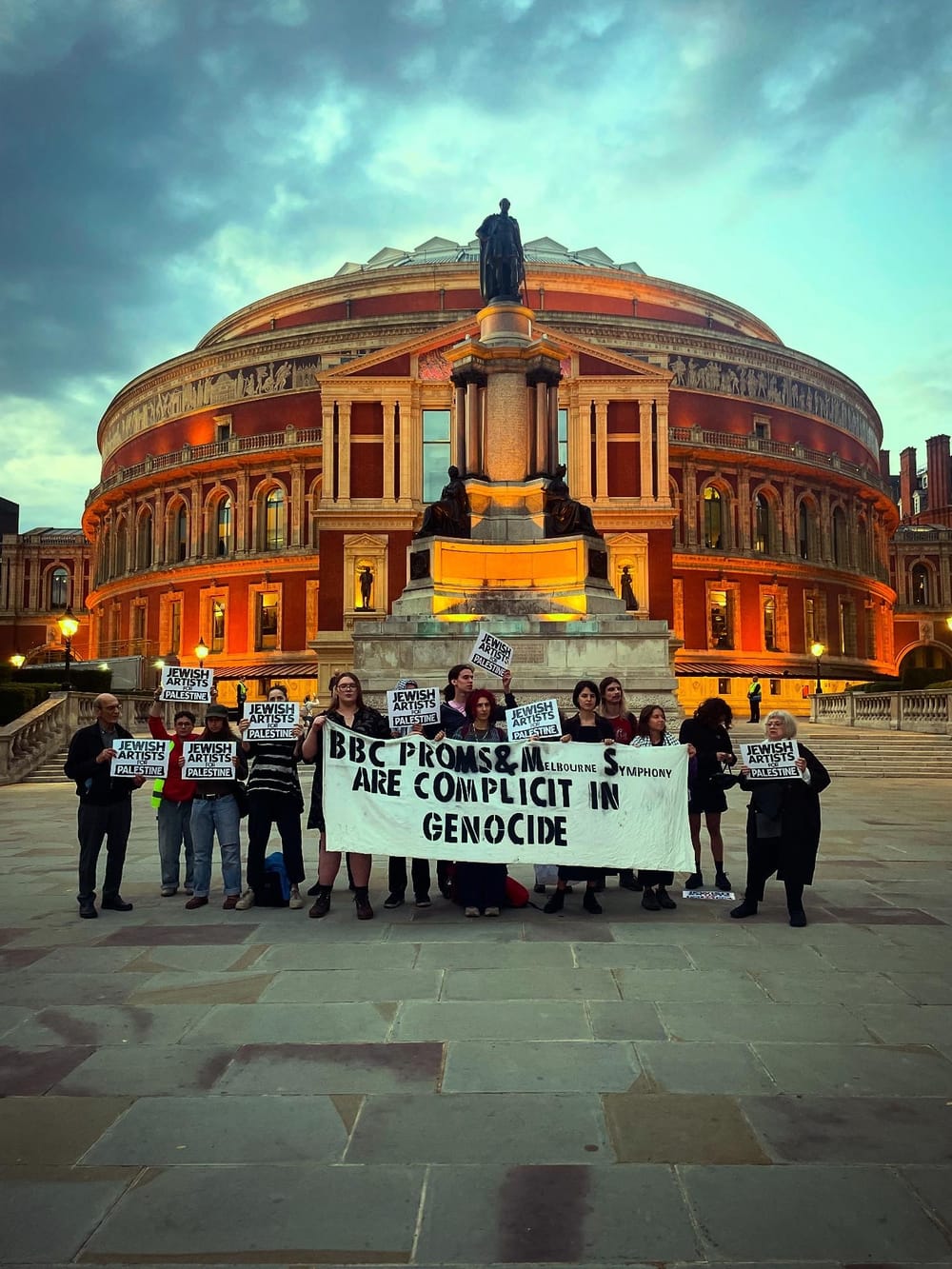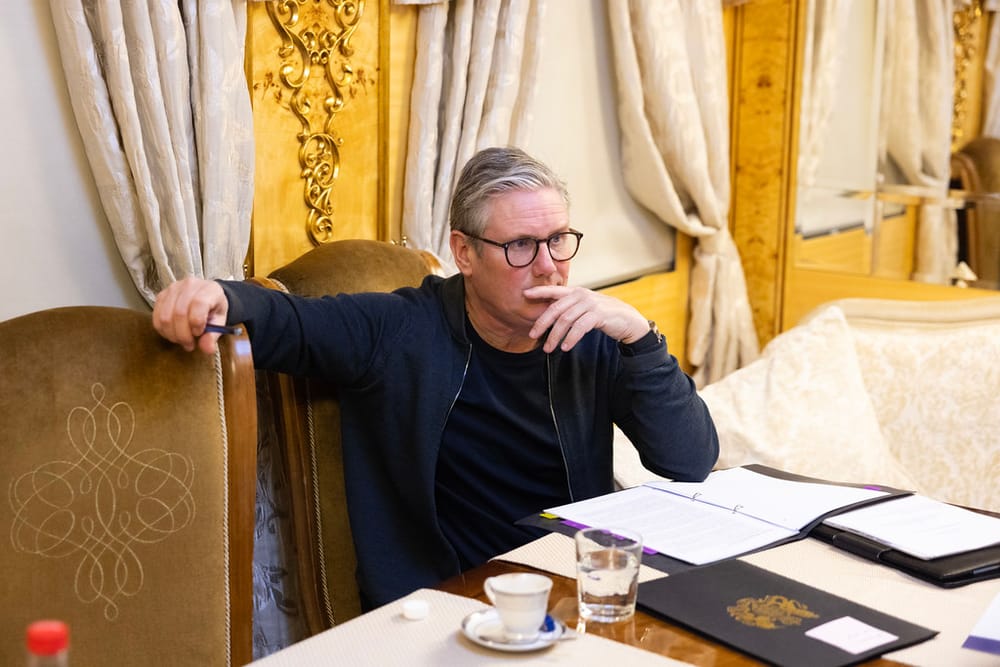The death that keeps on going
Months after the murder of activist Awdah Hathaleen, Israel's plan to demolish Umm al-Khair exposes a ruthless new level of impunity in the West Bank.

This article was originally published on Verso's Blog.
How much can one village physically take? The worst-case scenario has already happened countless times in the small West Bank community of Umm al-Khair. It happened when prominent Palestinian activist, my friend and colleague of three years, Awdah Hathaleen, was fatally shot by Israeli settler Yinon Levy at the end of July. It happened throughout the following hours and days, when Israeli forces raided the village’s mourning tent and arrested seventeen members of Awdah’s grieving, traumatised family, leaving them to rot in prison for many days while Levy walked free. There was not a moment it didn’t happen during the ten long, painful days that Israeli authorities refused to return Awdah’s body to the village for burial.
It quietly unfolded again one morning in August when Awdah’s wife, Hanady, woke up from her first vivid dream, transfixed by the certainty that he was still alive. And it continues to unfold, every time that Levy shows his face in the village, honks his car at the children, and calls out “he’s dead!”.
It happened again like clockwork three Tuesdays ago, on 28 October, the three-month anniversary of Awdah’s murder, when Israeli civil administration officers entered the village and handed out notices to residents detailing the impending demolition of fourteen buildings. On top of eleven family homes, structures slated for demolition include the bathroom of Awdah’s elderly mother, Khadra, known to all as Hajja, a greenhouse, renowned for its enormous tomatoes, owned by Awdah’s brother, Khalil, and the village community centre, complete with the mural that honours Hajj Suleiman, Awdah’s paternal uncle who was crushed to death by an Israeli police vehicle four years ago. Included on the list is the children’s playground, along with its colourful slides and merry-go-rounds – and the football pitch just opposite, not excluding its blood-stained far-right corner, which has been sealed-off with stones and flowers since becoming the site where Awdah was murdered.
Two weeks ago, that football pitch became the location of an emergency conference convened for journalists and diplomats to notify them of the imminent demolitions. There, in the middle of the pitch, Khalil, wishing his brother was there to say the words for him, explained that the village had until 12 November to successfully submit an appeal to the Jerusalem courts. A couple of days before the deadline was reached, Khalil told me that they had just been granted another fourteen days, buying Umm al-Khair until 24 November.
Israel justifies these demolitions using the same claims that it always has. The state argues that these houses and structures were built illegally, in the absence of a permit — a permit that is 99% of the time refused to Palestinians, and that is in any case neither here nor there in the context of Israel’s illegal presence in the West Bank. Far too much destruction has already been seen, felt, witnessed and documented across the region, far too many conclusions already reached by human rights experts, lawyers and journalists for these home demolitions to mean anything other than plain and simple ethnic cleansing. While Israel prepares to destroy Palestinian homes, in a territory that it has no business administering in the first place, it has facilitated the creation of dozens of unauthorised Jewish outposts across the West Bank’s Area C since 7 October – including within Umm al-Khair itself.
First built in the 1980s over 4,000 dunams of land belonging to Umm al-Khair, the settlement of Carmel today counts its population above 600. Its rows of all-American red-roofed houses already loom so close to the Palestinian village that you can make out the laundry hung out on the line, the binman collecting the bins, and the postman delivering the post. In the months before Awdah was killed, a group of settlers from Carmel – assisted by Levy, who previously ring-led the creation of the Meitarim Farm outpost just over a dozen miles away, and with it the total destruction of the village of Zanouta – set to work establishing a new outpost in the heart of Umm al-Khair.
Construction began just a foot behind the community centre, under the cover of the village olive groves. By September, caravans and picnic tables had appeared, and virtual flyers were circulated around Carmel advertising for volunteers to inhabit the “new neighbourhood”. A family moved in the day after the Jerusalem District Court issued an order against the outpost, following a case brought by human rights lawyers.
Israeli police have since done nothing to enforce the court’s order and bar settlers from entering. As for the Israeli military, when they are not arbitrarily detaining Palestinians and foreign activists visiting the village, they may be found escorting settler families through Umm al-Khair every Friday evening to a Shabbat service held at the outpost. From across the street, in Hanady’s home, it is possible to overhear the crescendos of the same gentle psalms I grew up with in London, now transformed into assertions of power and supremacy.
The government – itself dominated by settlers – is only too glad to sing along and speed up Umm al-Khair’s destruction. In late October, Knesset member Tzvi Sukkot of Itamar Ben Gvir’s far-right party Otzma Yehudit (Jewish Power), paid a visit to the Carmel outpost. Umm al-Khair residents recorded him taunting them, vowing to the villagers that they would soon all be kicked out. The next day, the demolition orders were announced.
If the orders are to go ahead – lawyers told Khalil, Awdah’s brother, there is an “80% chance” that they will – half the village will be homeless for the winter. Naturally, it won’t be the first winter. This round of demolitions – the first took place in 2007 – will be the most recent extension of the violent colonialism that has stalked Umm al-Khair since even before it was founded. If the orders go ahead, everyone will know what comes next. There will be crowds of activists and journalists, making thorough documentation of the bulldozer as it makes contact with the aluminium. Then the first night in the cold. Some form of arrangements eventually made, tents set up and any remaining buildings squeezed into. As catastrophic as it will be, it won’t actually be the end, somehow. “There is nowhere else to go”, Khalil repeated time and again to journalists pressing him for a concrete answer. At some point the harsh winter will become the harsh summer, and perhaps the slow process of rebuilding will begin some time in between, during the spring. Every evening, the thin glimmer of a city in the distance will continue to bring a reminder of the fact that the worst happened for the first time over seventy years ago – when an extended family of Palestinian Bedouins founded Umm al-Khair after being displaced from their ancestral lands surrounding what is now known to Israelis as Arad.
Awdah’s cousin Eid, whose house is on the list (his new house, his old one was already demolished last summer), made it abundantly clear that the only viable option for preventing yet another needless catastrophe is through applying international pressure. Over one hundred Democrats have since addressed a letter to Netanyahu, urging him to halt the demolitions. But two years of genocide in Gaza have demonstrated that stern words alone cannot make a dent on Israel’s impunity, and they will certainly not stop the bulldozers from coming, if not next week, then the one after, or the one after that. Just two days after the Democrats sent their letter, Hanady’s brother Ahmad sustained a serious head injury when settlers visiting the outpost attacked him (not unlike the serious head injury he sustained the day that Awdah was killed, that time inflicted by a bulldozer). “When I heard that, I thought, halas, he’s dead,” Hanady told me.
Last Wednesday morning, 12 November, the day that the demolitions were originally set for, a pair of bulldozers were sighted making their way up the road towards Umm al-Khair. They stopped at the entrance, and the entire village held its breath. “A very bad sign of something happening to Umm al-Khair,” Eid wrote in a message to secure activist groups. Police and soldiers gathered outside the community centre. Nobody had a second’s doubt that a flimsy piece of paper from the government would mean anything at all to the individuals controlling the bulldozers. After thirty minutes, the bulldozers moved on, eastwards, to Al-Fakheet, another village nearby, to demolish somebody else’s home, deeper in the desert, a family I don’t know.
As Israel ostensibly redirects its infantry, its weapons and its energies away from Gaza, the West Bank braces to receive them full-force. And what is the step from local ethnic cleansing to all-out genocide, when the world splits no hairs over international law? Certainly, the instruments are different (even if the actors are largely the same). Instead of bombing people’s houses, they are pried apart brick by brick. Rather than starve Palestinians through a military blockade, the water pipes and electricity cables are snipped by hand – not for the first time, Umm al-Khair was successfully cut off from both for five days in October. The settlers join the dots for us themselves: a few weeks ago, a group of them plastered a billboard with “There is no future for Palestine” printed in Arabic, accompanied by an image of Palestinians being expelled from Gaza, over the entrance of Umm al-Khair. Replicas of this billboard have already been seen in villages close to Ramallah and Jerusalem, over highways and along approaches to checkpoints. Physical attacks themselves, often targeting multiple communities simultaneously, have assumed an increasingly-coordinated character in recent months. The US, the UK and the entire international community have already failed to prevent one genocide in Palestine. Meeting the demands made by people of conscience across the world in the case of Gaza – suspending the sale of arms and imposing economic sanctions – remains the only way to prevent the true worst-case scenario from reaching every Palestinian village, town, and city in the West Bank.
For three years, I worked with Awdah on translating and publishing stories from Umm al-Khair and its surrounding villages, known collectively as Masafer Yatta. In the summer of 2024, after the series of demolitions in the village that left Eid’s family along with several others homeless, Awdah wrote an article for +972 Magazine describing his fear of the intergenerational trauma likely to be passed down to his children. “I was only 13 years old during the first demolitions in 2007, but I still remember that day so clearly,” he wrote. It is unbearable that a slight variation of that article now demands being written by somebody else.▼
Author

Kate Greenberg is a writer, activist, and editor at Vashti.
Sign up for The Pickle and New, From Vashti.
Stay up to date with Vashti.



